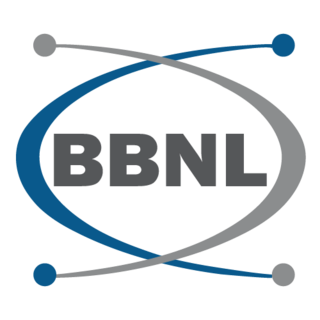
Janet is a high-speed network for the UK research and education community provided by Jisc, a not-for-profit company set up to provide computing support for education. It serves 18 million users and is the busiest National Research and Education Network in Europe by volume of data carried. Previously, Janet was a private, UK-government funded organisation, which provided the JANET computer network and related collaborative services to UK research and education.

Telewest was a cable internet, broadband internet, telephone supplier and cable television provider in the United Kingdom. It was listed on the London Stock Exchange, and was also once a constituent of the FTSE 100 Index.

The regional chambers of England were a group of indirectly elected regional bodies that were created by the provisions of the Regional Development Agencies Act 1998. There were eight regional chambers, one for each of the regions of England except Greater London, which had opted for an elected mayor and assembly in 1998. All eight regional chambers had adopted the title "regional assembly" or "assembly" as part of their name, though this was not an official status in law. The chambers were abolished over a two-year period between 31 March 2008 and 31 March 2010 and some of their functions were assumed by newly established local authority leaders' boards.

The Learning and Skills Council (LSC) was a non-departmental public body jointly sponsored by the Department for Business, Innovation and Skills (BIS) and the Department for Children, Schools and Families (DCSF) in England. It closed on 31 March 2010 and was replaced by the Skills Funding Agency and the Young People's Learning Agency.
The National Grid for Learning (NGfL) was a UK government-funded gateway to educational resources on the Internet. It provided a curated collection of links to resources and materials of high quality. The NGfL was established to support schools in England, while separate grids were created for schools in Northern Ireland, Scotland, and Wales.

The British Youth Council, known informally as BYC, was a UK charity that worked to empower young people and promote their interests. The national charity, ran by young people, existed to represent the views of young people to government and decision-makers at a local, national, European and international level; and to promote the increased participation of young people in society and public life. It was partly funded by the Department for Digital, Culture, Media and Sport and UK Parliament.

The London Grid for Learning commonly referred to as LGfL is a British not for profit technology company with headquarters in central London. The charity founded in 2001 procures, develops and delivers technology and educational content including broadband connections, filtering and safeguarding services, devices and software and licences. LGfL started in London but is now a nationwide organisation winning multiple awards such as ERA Education Supplier of the Year.
Science Learning Centres are a UK government initiative to address the need for improved science education and development for teachers in England.

R Cable y Telecomunicaciones Galicia, S.A. is a Spanish telecommunications company that offers fixed and mobile telephone, television and broadband internet services to businesses and consumers in Galicia, Spain.

EMMAN was a company limited by guarantee and jointly owned by its members, eight Higher Education Institutions in the East Midlands region of the United Kingdom.
Internet in Australia first became available on a permanent basis to universities in Australia in May 1989, via AARNet. Pegasus Networks was Australia's first public Internet provider in June 1989. The first commercial dial-up Internet Service Provider (ISP) appeared in capital cities soon after, and by the mid-1990s, almost the entire country had a range of choices of dial-up ISPs. Today, Internet access is available through a range of technologies, i.e. hybrid fibre coaxial cable, digital subscriber line (DSL), Integrated Services Digital Network (ISDN) and satellite Internet. In July 2009, the federal government, in partnership with the industrial sector, began rolling out a nationwide fibre-to-the-premises (FTTP) and improved fixed wireless and satellite access through the National Broadband Network. Subsequently, the roll out was downgraded to a Multi-Technology Mix on the promise of it being less expensive and with earlier completion. In October 2020, the federal government announced an upgrade by 2023 of NBN fibre-to-the-node (FTTN) services to FTTP for 2 million households, at a cost of A$3.5 billion.

The Internet in the United States grew out of the ARPANET, a network sponsored by the Advanced Research Projects Agency of the U.S. Department of Defense during the 1960s. The Internet in the United States of America in turn provided the foundation for the worldwide Internet of today.

The United Kingdom has been involved with the Internet throughout its origins and development. The telecommunications infrastructure in the United Kingdom provides Internet access to homes and businesses mainly through fibre, cable, mobile and fixed wireless networks, with the UK's 140-year-old copper network, maintained by Openreach, set to be withdrawn by December 2025, although this has since been extended to 31st January 2027 in some areas due to reasons including panic alarms in sheltered housing needing a persistent connection which can't be guaranteed with internet-based DECT systems.

WMnet is the tag name for the West Midlands Regional Broadband Consortium, an association of local councils in the West Midlands of England created under the aegis of the Department for Education and Skills National Grid for Learning Programme in 2001.
Smallworld Fibre was a British telecommunications company based in Irvine, North Ayrshire. Their coverage area used to be Irvine, Dreghorn, Troon, and Kilmarnock in the west of Scotland, and Carlisle, Lancaster and Morecambe in the northwest of England, where they served over 40,000 homes. Smallworld provided broadband, telephone, and digital television services to residential customers from 2001 to 2014, when the company was acquired by Virgin Media.

Broadband is a term normally considered to be synonymous with a high-speed connection to the internet. Suitability for certain applications, or technically a certain quality of service, is often assumed. For instance, low round trip delay would normally be assumed to be well under 150ms and suitable for Voice over IP, online gaming, financial trading especially arbitrage, virtual private networks and other latency-sensitive applications. This would rule out satellite Internet as inherently high-latency. In some applications, utility-grade reliability or security are often also assumed or defined as requirements. There is no single definition of broadband and official plans may refer to any or none of these criteria.
The Ultra-Fast Broadband initiative is a New Zealand Government programme of building fibre-to-the-home networks covering 87% of the population by the end of 2022. It is a public–private partnership of the government with four companies with total government investment of NZ$1.5 billion. The project planned to provide speeds of at least 100 Mbit/s downstream and 50 Mbit/s upstream, though upgradable to 10 times that speed.
The Young People's Learning Agency for England, commonly referred to as the Young People's Learning Agency (YPLA), was a UK government body, based in Coventry, which funded further education for 16- to 19-year-olds in England. It closed on 31 March 2012, when its responsibilities were transferred to the newly created Education Funding Agency.

BharatNet, also known as Bharat Broadband Network Limited (BBNL), is a central public sector undertaking, set up by the Department of Telecommunications, a department under the Ministry of Communications of the Government of India for the establishment, management, and operation of the National Optical Fibre Network to provide a minimum of 100 Mbit/s broadband connectivity to all 250,000-gram panchayats in the country, covering nearly 625,000 villages, by improving the middle layer of nation-wide broadband internet in India to achieve the goal of Digital India.

Worcestershire Parkway is a split-level railway station where the Cotswold and Cross Country lines cross near Norton, Worcester, England. It opened on 23 February 2020.












